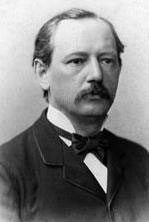Plant Taxonomy
About Plant Taxonomy
Plant taxonomy is closely allied to plant systematics, and there is no sharp boundary between the two. In practice, "plant systematics" is involved with relationships between plants and their evolution, especially at the higher levels, whereas "plant taxonomy" deals with the actual handling of plant specimens. The precise relationship between taxonomy and systematics, however, has changed along with the goals and methods employed.
Plant taxonomy is well known for being turbulent, and traditionally there is no really close agreement on circumscription and placement of taxa.
Prior to Linnaeus, all described species were given long, complex names that provided much more information than was needed and were clumsy to use. Linnaeus took a different approach: he reduced every single described species to a two-part, Latinized name known as the “binomial” name. Thus, through the Linnaean system a species such as the dog rose changed from long, unwieldy names such as Rosa sylvestris inodora seu canina and Rosa sylvestra alba cum rubore, folio glabro to the shorter, easier to use Rosa canina. This facilitated the naming of species that, with the massive influx of new specimens from newly explored regions of Africa, Asia, and the Americas, was in need of a more efficient and usable system.
Plants, and indeed all organisms, are classified in a hierarchical system that attempts to illustrate the evolutionary relationships between the various groupings within the hierarchy. This concept of relatedness forms the backbone of modern classification schemes. Scientists who attempt to classify organisms and place them within an evolutionary framework are called Taxonomists, the most famous of which would be Linnaeus himself.At the broadest level, all organisms on the planet are classified into 5 Kingdoms: Animalia (animals), Plantae (plants, some multicellular algae), Fungi (fungi), Monera (prokaryotic bacteria), and Protista (eukaryotic bacteria, most algae, etc.), representing the most ancient branches of the evolutionary “tree of life.” Organisms in any given Kingdom may be separated from organisms in any other Kingdom by many hundreds of millions, if not billions, of years of evolution. Historically, all organisms known were grouped into only two Kingdoms: organisms that had finite growth, moved, and ate were grouped into the Kingdom Animalia, while organisms that had indefinite growth, didn’t move, and didn’t eat were grouped into the Kingdom Plantae. Of course, as science progressed, it became increasingly evident that such a simplistic approach to taxonomy was ineffective and many species were found that did not fit either grouping particularly well. The proposal to move to an eight-Kingdom system suggests that our current classification system, with its five Kingdoms, may yet change again as our understanding of the diversity of organisms around us continues to grow.
At the lowest level of the classification hierarchy is the “species”, a human-derived concept that, to this day, is still not completely understood by scientists. The general consensus in past decades has been that a “species” is a group of similar individuals which can reproduce successfully with each other while at the same time being reproductively isolated from other similar species (known as the “Biological Species Concept”). This interpretation worked reasonably well when it was first proposed, but the more we learn about ecological systems the more apparent it becomes that nature is by no means so simple. The evolutionary process is a continuum whereby a portion of the population of one entity gradually becomes more and more distinctive and discrete, eventually reaching a state in which it is reproductively isolated from its parent “species.” The infinite range of variation between the two ends of this evolutionary process means that many populations are difficult to assign to either a parent species or a new, independent species.
Subspecific Taxonomy
Another method used by taxonomists to deal with the variation within species is the use of “infraspecific” or “subspecific” taxonomy. Many species are not uniform in appearance throughout their distribution, and by assigning subspecies and varietal names to the identifiable populations scientists are able to catalogue and name this variation.
Identification and classification
Two goals of plant taxonomy are the identification and classification of plants. The distinction between these two goals is important and often overlooked.Plant classification is the placing of known plants into groups or categories to show some relationship. Scientific classification follows a system of rules that standardizes the results, and groups successive categories into a hierarchy. For example, the family to which the lilies belong is classified as follows:
Kingdom: Plantae
Division: Magnoliophyta
Class: Liliopsida
Order: Liliales
Family: Liliaceae
Genera : ... ...
The classification of plants results in an organized system for the naming and cataloging of future specimens, and ideally reflects scientific ideas about plant inter-relationships.
Classification systems
 Charles Edwin Bessey
Charles Edwin BesseyBessey system
Charles Edwin Bessey (1845 - 1915)The goal was to organize flowering plants in a scheme that reflected evolutionary relationships. The main difference between this and Engler and Prantl's work is that Bessey's system had evolution as its central theme from the very beginning. Most modern systems of classifications, including Cronquist's are modifications of Bessey's 'intuitive approach'.
A system of plant taxonomy, the Bessey system was published in
Charles E. Bessey (1915). "The phylogenetic taxonomy of flowering plants". Annals of the Missouri Botanical Garden (Missouri Botanical Garden Press) 2 (1/2): 109–164. doi:10.2307/2990030. JSTOR 2990030. available online at "Botanicus.org" (PDF). Missouri Botanical Garden. Retrieved 2007-08-16. Bessey considered Spermatophyta as having a polyphyletic origin, being composed by three different phyla, of which he only treated Anthophyta (syn.: Angiosperms).
With some modifications, most modern classifications - for example, those of Cronquist (1981, 1983, 1988), Takhtajan (1969, 1980, 1983, 1991), Stebbins (1974), R. Dahlgren (1975, 1980, 1983; R. Dahlgren et al. 1981; R. Dahlgren and Rasmussen 1983; R. Dahlgren and Bremer 1985; G. Dahlgren 1989), and Thorne (1976, 1981, 1983, 1992) - follow the Bessey tradition.
- A phylogenetic system of organizing flowering plants with the use of genetic techniques.
- Besse's theory was based off of evolution.
- 'Besse's cactus' was based on his 28 rules, which show the evolutionary trends in angiosperm.
- The most direct path represents the actual evolutionary history of a given group.
- The most primitive, original flower was believed to have had many separate petals, stamens, and carpels.
- As they evolved the parts of the flowers either fused together, reduced, or became absent.
- The simple structures are not primitive, but have become simple as a result of a reduction from more complex parts.
- An example of the primitive flower would be the Ranunculus, buttercup flowers.
- A more advanced type of flowering plant would be the catkin inflorescences.
Melchior system
 Heinrich Gustav Adolf Engler
Heinrich Gustav Adolf EnglerHeinrich Gustav Adolf Engler (Adolf Engler) (1844–1930) and Karl Anton Eugen Prantl (1849-1893) made the Engler and Prantl or Phylogenetic System, published in Die Natürlichen Pflanzenfamilien 1887-1915, where the plants were sorted by the basis of complexity of floral morphology. Characters like a perianth with one whorl, unisexual flowers and pollination by wind were considered primitive as compared to perianth with two whorls, bisexual flowers and pollination by insects. This was the first major Phylogenetic Classification and that gave a slightly changed August Wilhelm Eichler system. They dealt with the primitive groups as well. It is in line with Adolphe-Théodore Brongniart's 1843 work.
Engler's taxonomic work was also published in Das Pflanzenreich 1900-1968 and Syllabus der Pflanzenfamilien 1924. It contained more than Angiospermae; even green algae, which most taxonomists do not include in Plantae, and it is still one of the most complete works on all plants and related.
Main groups in 1964:
Divisio Embryophyta
Subdivision Angiospermae
Classis Monocotyledoneae
Classis Dicotyledoneae
Subclasses Archychlamydeae
Subclasseis Sympetalae
Heinrich Gustav Adolf Engler was born in Sagan, Prussia (now Żagań), Poland. He obtained his Ph.D. from the University of Breslau (now Wrocław, Poland) in 1866, and worked there for some years. Then he became the custodian of botanical collections of the Botanische Institute of Munich. In 1878, he got professorship at the University of Kiel. In 1884, he went back to Breslau as director of the Botanical Garden. From 1889 to 1921 he was professor at the University of Berlin and director of the Berlin-Dahlem Botanical Garden.
Many plants are named in his honour, such as Englerastrum, Englerella, Engleria, Englerina, Englerocharis, Englerodaphne, Englerodendron and Englerophytum.
- Hans Melchior in Casuarinales, Juglandales, Balanopales, Leitneriales, Salicales, Fagales, Urticales, Didiereaceae, Piperales, Aristolochiales, Guttiferales, Sarraceniales, Papaverales, Hydrostachyales, Podostemonales, Julianiales, Violales, Cucurbitales, Myrtiflorae, Umbelliflorae, Primulales, Tubiflorae, Plantaginales, Liliiflorae p. p., Spathiflorae and Microspermae.
- G. Buchheim in Proteales, Cactales, Magnoliales and Ranunculales.
- W. Schultze-Motel in Santalales, Balanophorales, Medusandrales, Rhamnales, Malvales, Diapensiales, Ericales and Cyperales.
- Th. Eckardt in Polygonales, Centrospermae, Batales, Plumbaginales, Helobiae, Triuridales and Pandanales.
- G. K. Schultze-Menz in Rosales.
- H. Scholz in Geraniales, Rutales, Sapindales and Celastrales.
- G. Wagenitz in Thymelaeales, Ebenales, Oleales, Gentianales, Dipsacales and Campanulales.
- U. Hamann in Cyanastraceae, Pontederiaceae, Philydraceae, Juncales, Bromeliales and Commelinales.
- E. Potztal in Graminales, Principes, Synanthae and Scitamineae.




